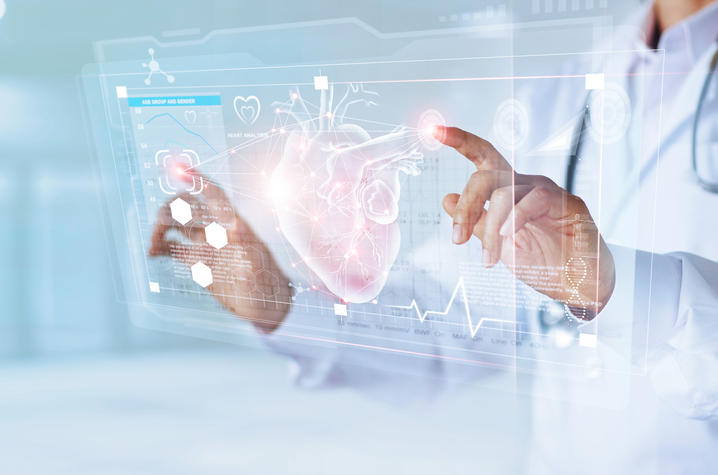COVID-19 Could Threaten Patients' Hearts

The University of Kentucky Public Relations & Strategic Communications Office provides a weekly health column available for use and reprint by news media. This week's column is by Dr. Vincent L. Sorrell, director of Advanced Cardiovascular Imaging at UK HealthCare's Gill Heart & Vascular Institute.
LEXINGTON, Ky. (Oct. 19, 2020) — It has been months since the coronavirus pandemic gripped the nation, leaving more than 200,000 people dead - a number that continues to climb. Meanwhile, we are learning more about the virus and its unusual presentation, as well as the toll it takes on the human body.
One particular side effect of the disease is catching our eye. We are seeing more cases where COVID-19 is attacking some patients' hearts, and it's not necessarily patients who have a full-blown case of COVID. One of the more concerning aspects is that we are seeing myocarditis cases in patients who had mild symptoms and had already recovered.
Myocarditis can be simply considered as inflammation of the heart. It is a well-known, long-standing complication of various viruses and other infectious diseases, and can even be a side effect of some medications. Severe cases of myocarditis can lead to heart failure, abnormal heartbeat and possibly death.
Patients with myocarditis typically complain of chest pain, shortness of breath, fatigue and palpitations. It is usually diagnosed with clinical features and symptoms, ECG tracing, blood tests, heart ultrasound testing and most accurately, with a cardiac magnetic resonance imaging (CMR).
So far, there is limited data and instances of myocarditis in COVID patients is rare enough that the data that does exist is based on a very few number of cases. However, a recent Cardiac MRI study from Germany found 30-60% of 100 coronavirus recovery patients had heart muscle inflammation - a much higher number than expected.
Another troubling factor? The age in which we are seeing an increasing number of myocarditis patients. While there are increases in the 65-79 year old age group, patients ages 20-29 are seeing a steady increase in myocarditis cases, too. You may have also heard concerns about myocarditis cases in athletes. While true, all young people are at risk - athletes or not. If an athlete does develop myocarditis, their respective competitive sport should be held to allow the heart to heal and lower the risk of serious cardiac arrhythmias.
Given the massive pandemic and case numbers we are seeing, many patients with COVID will have some degree of heart muscle dysfunction, sometimes without heart symptoms and only abnormal blood tests. Other times patients have many symptoms and abnormal testing, even though the incidence of heart muscle dysfunction as a direct COVID complication may be rare.
Keeping a close eye on athletes
The heart is one of the biggest muscles in the human body. It is one of the many muscles hard at work during exercise and exertion, which goes hand in hand with playing sports. Athletes not only stress their hearts during competitive sport, they are potentially increasing the aerosolizing of coronavirus through extreme exhalation.
With the profound contagiousness of COVID-19, the high community load and lack of experience regarding long-term impact of the novel coronavirus, plus this new data, we worry about the heart health of any athlete.
We have learned that COVID does not discriminate in who it chooses to infect. The concern that younger populations can catch the disease and have serious, life-threatening side effects is real and something to consider, but we still have a lot to learn.
As the state’s flagship, land-grant institution, the University of Kentucky exists to advance the Commonwealth. We do that by preparing the next generation of leaders — placing students at the heart of everything we do — and transforming the lives of Kentuckians through education, research and creative work, service and health care. We pride ourselves on being a catalyst for breakthroughs and a force for healing, a place where ingenuity unfolds. It's all made possible by our people — visionaries, disruptors and pioneers — who make up 200 academic programs, a $476.5 million research and development enterprise and a world-class medical center, all on one campus.




